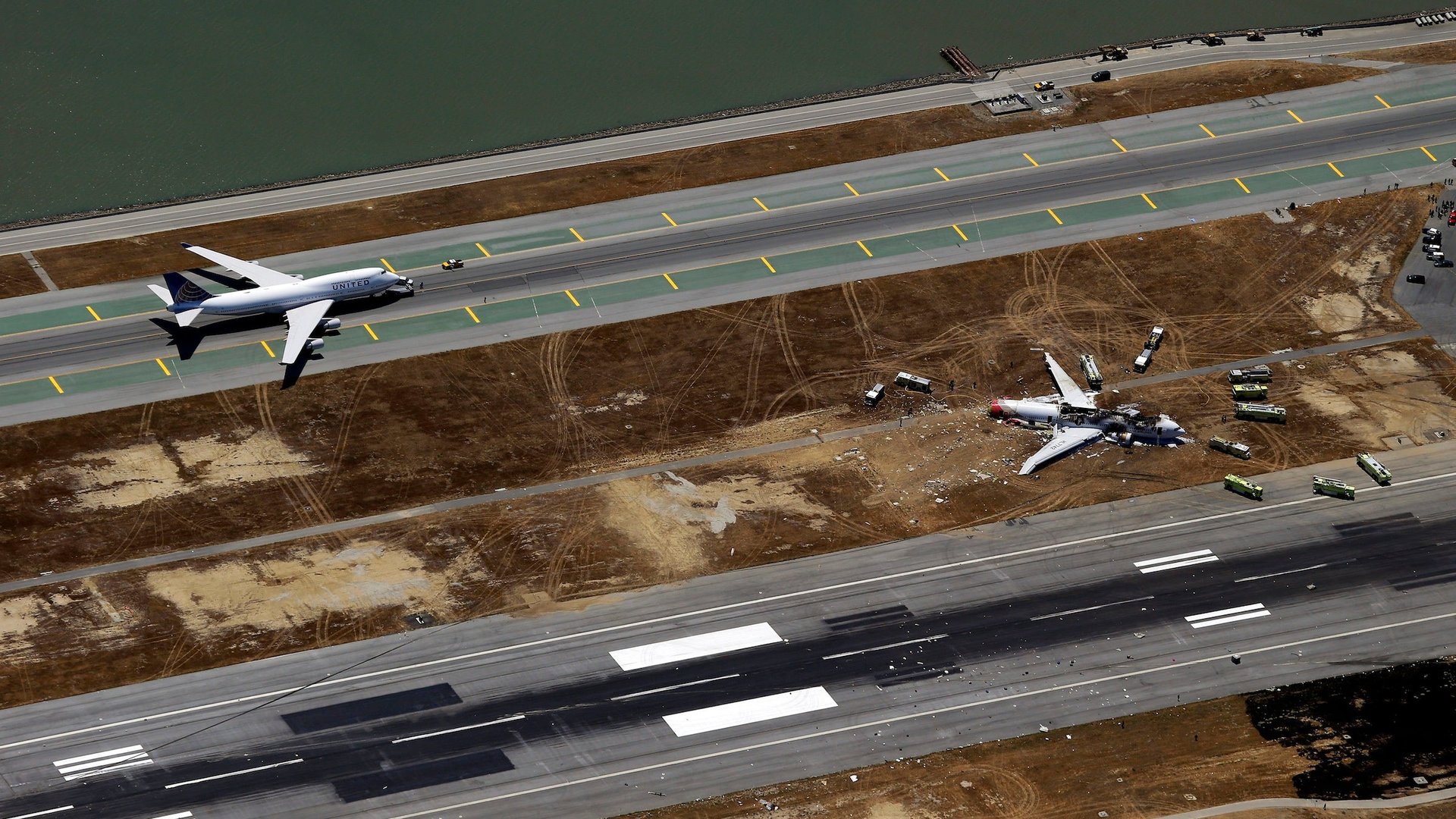Look at the flight path of Asiana 214 before it crashed in San Francisco yesterday
For some years, it’s been possible for anyone to follow the position of thousands of airline flights minute by minute. Flight-tracking site FlightAware has posted a set of links to all its data for Asiana Airlines (OZ) flight 214, which crash-landed at San Francisco airport yesterday (July 6) after coming in short of the runway’s edge, killing two of the 307 people on board. (USA Today has a useful visual guide to the crash site.)


For some years, it’s been possible for anyone to follow the position of thousands of airline flights minute by minute. Flight-tracking site FlightAware has posted a set of links to all its data for Asiana Airlines (OZ) flight 214, which crash-landed at San Francisco airport yesterday (July 6) after coming in short of the runway’s edge, killing two of the 307 people on board. (USA Today has a useful visual guide to the crash site.)
The investigation is homing in on pilot error, but meanwhile, some tech-minded people have been picking apart the FlightAware data.
The site provides the Asiana Boeing 777’s position, speed and altitude for the entire flight from Seoul to San Francisco, and has also provided a KML data file that you can use to look at the flight path in Google Earth. Dave McLauchlan, CEO of Buddy.com, which makes tools for app developers, took FlightAware data for other flights to create a series of graphs showing that, up until the very end, the flight path looked quite normal, both compared with recent flights of OZ 214, and with recent Boeing 777 landings.
The unusual path of OZ 214 on July 5th, the day before the crash, turned out to be because it had either missed its final approach and gone around again, or perhaps had been held waiting for a landing slot.
A look at the very end of yesterday’s flight, though, showed something unusual: it was flying much lower than normal just before touchdown, and the pilots evidently tried to pull up at the last minute.
The data aren’t granular enough to get a closer look at the flight’s final moments. But Steve Baker, a systems engineer at JP Morgan Chase, did a bit of his own hacking to create another Google Earth file, which shows the comparison between yesterday’s and the previous day’s flights more clearly.
As experts investigate the plane’s black-box recorders, they will learn a lot more, but as in so many other areas, the internet is now equipped to weigh in first—which, depending on your viewpoint, may or may not be a good thing.